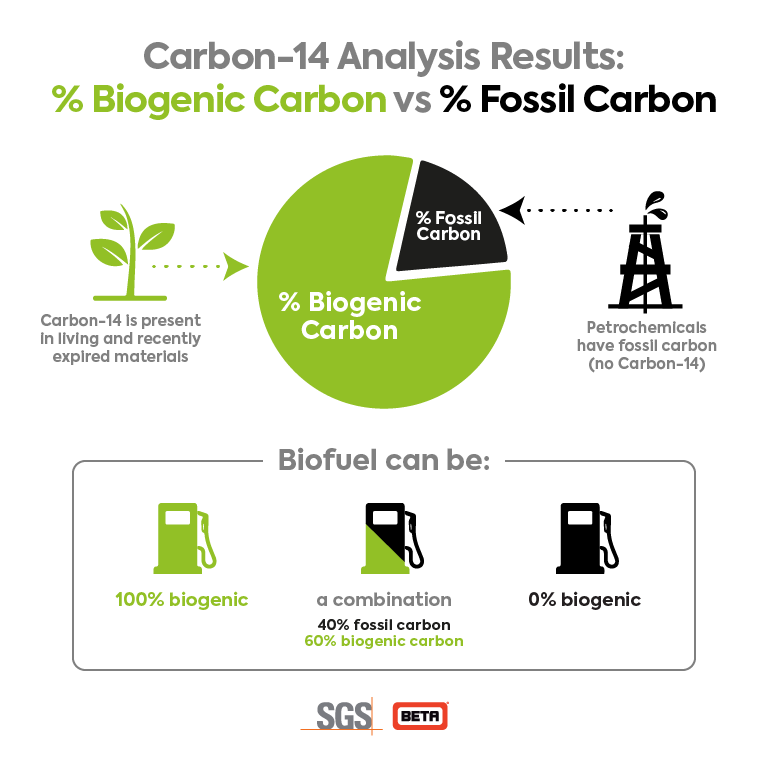Biogenic Testing of Biofuels
Measuring % Biogenic Carbon versus % Fossil Carbon in any biofuel blend, lubricants, and liquids with high petrochemical content
Biofuels can be derived from biomass (e.g. bio-ethanol) or fossil resources (e.g. petroleum). Biogenic carbon testing uses Carbon-14 technology to determine the biomass-based or biogenic fraction vs. fossil fraction of biofuels and other products. For example, bio-ethanol and synthetic fossil-derived ethanol are chemically indistinguishable but Carbon-14 testing will accurately distinguish the two.
Since carbon-14 is only present in living or recently expired material, Carbon-14 testing using Accelerator Mass Spectrometry (AMS) is the most effective method to determine the amount of biogenic carbon versus petroleum-derived carbon in biofuel blends.
What does “biogenic” mean?
The ASTM D6866-24 analytical standard defines “biogenic” as containing carbon (organic and inorganic) of renewable origin like agricultural, plant, animal, fungi, microorganisms, macroorganisms, marine, or forestry materials.

Determine the Biogenic Content of Biofuels by Carbon-14 Analysis
- Qualify for tax credits and comply with regulations, e.g. US EPA Renewable Fuel Standard
- Reach your decarbonization and net-zero goals
- Check the accuracy of biofuel blends and receive precise results in R&D
Biogenic Testing Reporting Standards
- ASTM D6866 – Biogenic content percentage is expressed as a fraction of total carbon of the biofuel, lubricant, or liquids with high petrochemical content
- EN 16640 – Result is expressed as % biobased carbon as a fraction of total carbon (applicable ONLY to lubricants and liquids with high petrochemical content)
Beta Analytic’s Biogenic Content Testing Services
- Standard Service – results are reported in 7 business days or less
- Priority Service – 4 business days or less
Ready to submit samples for testing?
Read our guidelines.
For reliable, accurate and fast biogenic testing solutions, choose Beta Analytic.
You might also be interested in:
Regulations, grants and certification programs recommending biogenic carbon testing
US EPA RFS adds biogenic content testing for biogas and renewable natural gas
Beta Infographic – Recommended containers when sending biofuels to the lab
Page last updated: January 2024